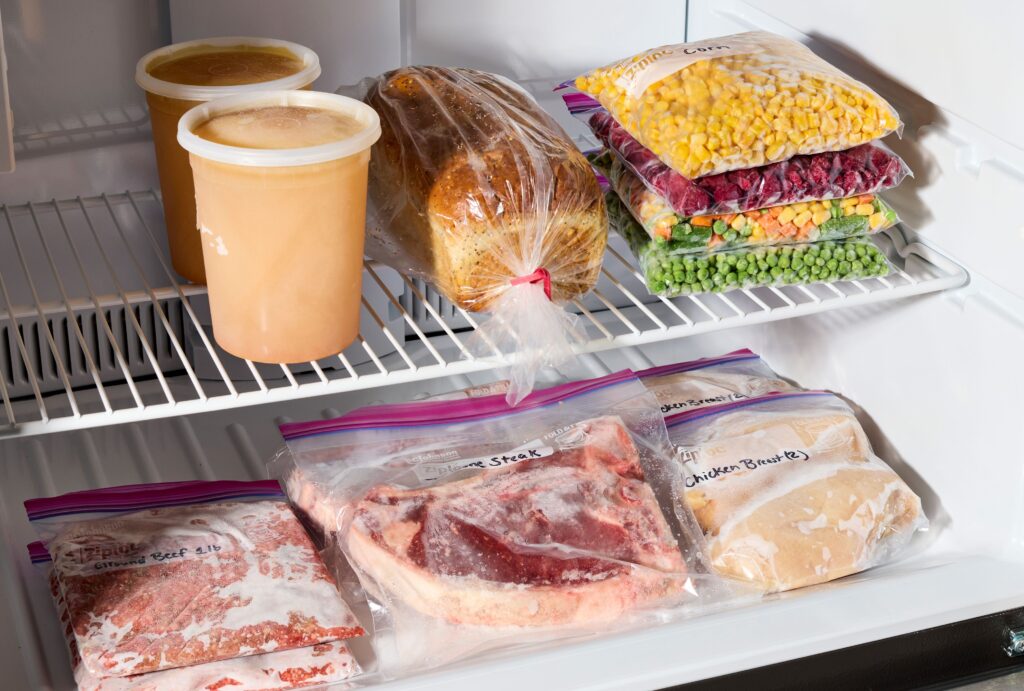When the electricity suddenly goes out, one of the biggest concerns is food spoilage. A Freezer Without Power can easily become a source of stress, especially during long outages or extreme weather. Fortunately, with a little preparation and smart techniques, you can significantly extend your freezer’s cooling time and keep your food safe for much longer. This guide explores practical, natural, and highly effective strategies to maximize your freezer’s temperature retention and reduce waste during unexpected outages.
Why Freezers Lose Their Cooling So Quickly
Modern freezers are designed to maintain stable temperatures, but they rely entirely on continuous electricity. When power is lost, the internal cooling system stops circulating cold air, and warm air gradually infiltrates. The rate at which a freezer warms up depends on:
- Insulation quality
- Amount of food stored
- How often the door is opened
- External temperature
- Freezer size and model
Understanding these factors will help you apply the right techniques to keep the interior colder for longer.
The Role of Preparation in Keeping Food Cold
Many people only think about protecting their food after the power goes out. However, preparation is the most effective way to preserve freshness during emergencies. Establishing daily habits such as keeping your freezer full, organizing items efficiently, and reducing unnecessary door openings can all contribute to longer cooling retention.
Preparation also plays a psychological part. In moments of stress, clarity and readiness can support overall wellness for life, reducing panic and helping you make smarter decisions about food safety and preservation.
How Long Will a Freezer Stay Cold Without Power?
Before applying any tricks, it’s important to know the average cooling duration:
- Full freezers: 48 hours
- Half-full freezers: 24 hours
- Refrigerators attached to freezers: 4–6 hours
These estimates vary, but they highlight one major principle: a fuller freezer stays cold longer.
Below is a detailed guide to naturally extending that cooling period as long as possible.
H2: Simple Tricks to Extend Cooling Time During a Power Outage
H3: 1. Keep the Freezer Door Completely Closed
This is the golden rule. Opening the door allows warm air to flood the interior and cold air to escape instantly. Even a few seconds can raise the temperature dramatically.
Tip: If you must open it, plan ahead so the door opens only once and for a few seconds.
H3: 2. Fill Empty Space with Ice Packs or Bottles
Freezers stay cold longer when they are full because frozen items help regulate temperature. If your freezer has empty space:
- Freeze bottles of water
- Add reusable ice packs
- Use bags of ice
These solid masses work as thermal batteries, maintaining low temperatures longer.
H3: 3. Cover the Freezer with Towels or Blankets
Adding insulation around the freezer dramatically slows heat transfer. Wrap the exterior with thick blankets, but keep all vents uncovered. Blocked vents can cause moisture buildup or appliance damage after power returns.
H3: 4. Move the Freezer Away from Heat Sources
If your freezer is located near a window, stove, or direct sunlight, heat will be absorbed faster. During an outage:
- Pull it slightly away from the wall for better airflow
- Move it away from sunlight
- Close curtains or blinds
A cooler surrounding environment equals a slower internal temperature rise.
H3: 5. Use Dry Ice — If Available
Dry ice is extremely cold and can keep your freezer at safe temperatures for long periods. While not always available, it is one of the most effective options.
- 25 pounds of dry ice can keep a small freezer cold for 2–3 days
- Always handle with gloves
- Place it on the top shelf for best air circulation
H3: 6. Keep a Thermometer Inside
A freezer thermometer helps you know when you’ve reached the danger zone (above 0°F or -18°C). This lets you decide when to use emergency cooling or when to discard certain foods.
Pro Tip: Digital thermometers with memory retain temperature readings even during outages.
H3: 7. Group Food Items Together
Cluster frozen items into groups. When foods are packed tightly, they maintain cold temperatures longer due to reduced airflow gaps.
For example:
- Place meats together
- Keep vegetables packed tightly
- Group frozen fruits and desserts
Think of it like packing snow — dense areas retain cold much better.
H3: 8. Turn Your Freezer Into a “Cold Zone”
This strategy involves rearranging your freezer during an outage to create a central cold core.
Steps:
- Place the most frozen items in the middle
- Surround them with less frozen or partially thawed items
- Close all gaps
- Put ice packs at the top
Cold travels downward, so this layout maximizes cooling efficiency.
H3: 9. Keep Your Freezer Well-Organized Before Emergencies
An organized freezer helps you know exactly where things are so you avoid unnecessary door openings. Use labeled bins, stack food vertically when possible, and maintain an inventory.
H3: 10. Seal the Gasket and Check for Air Leaks
If the freezer door doesn’t seal properly, warm air will constantly enter even when it’s closed.
Check the seal by:
- Sliding a piece of paper between the gasket and door
- Closing the door
- Pulling the paper — if it slides out easily, the seal needs replacing
A tight seal = extended cooling time.
H2: Natural Strategies to Keep Freezers Colder Longer
H3: 1. Utilize Snow or Ice During Winter
If you live in a cold climate, nature can be your greatest asset. During winter:
- Store snow in bags and place it in the freezer
- Build makeshift ice blocks
- Keep freezer vents unobstructed
These natural cooling tools can preserve food for days.
H3: 2. Keep Freezers in the Coldest Room
Basements and shaded rooms maintain lower temperatures. If possible, place your freezer:
- In a basement
- Far from kitchen heat
- In a garage during winter
A naturally cool environment significantly reduces heat transfer.
H3: 3. Avoid Opening Other Cold Appliances
Every time you open the refrigerator or freezer compartment attached to the refrigerator, the compressor tries to compensate by circulating air — but with no power, this only accelerates warming.
During an outage, use an ice chest for frequently accessed items.
H2: What Foods Stay Safe Longest?
Some foods handle temperature changes better than others. Knowing this helps reduce stress and allows smarter meal planning during outages.
Foods that stay cold longest:
- Large cuts of meat
- Dense frozen vegetables
- Butter and cheese blocks
- Frozen water bottles
Foods that spoil quickly:
- Ice cream
- Frozen desserts
- Thin meats
- Ready-to-eat frozen meals
Prioritize consuming foods from the second category first if the outage continues.
H2: Signs That Freezer Food Is Still Safe
Even after an extended outage, food may still be safe if the temperature stayed below 40°F (4°C) for less than two hours. Here’s what to look for:
H3: 1. Ice Crystals Still Present
If your food still has visible ice crystals, it is safe to refreeze.
H3: 2. Food Feels Cold to the Touch
A simple but effective test. If it feels like refrigerator temperature or colder, it is likely safe.
H3: 3. No Odor or Texture Changes
If meat smells off or feels sticky, discard immediately.
H2: Long-Term Strategies for Future Outages
If your area experiences frequent outages, consider:
H3: 1. Investing in a Backup Generator
Small generators can power a freezer for several hours.
H3: 2. Using Solar Power
Solar-powered battery systems are silent, clean, and increasingly affordable.
H3: 3. Upgrading to a High-Insulation Freezer
Modern energy-efficient models retain cold for much longer.
Conclusion
A power outage doesn’t have to mean losing valuable food or dealing with unnecessary stress. With the right techniques—both preventive and in-the-moment—you can dramatically extend the lifespan of your freezer’s cooling and keep your food safe naturally. Simple habits like keeping the freezer full, avoiding unnecessary door openings, and adding insulation can make all the difference.
By staying prepared and informed, you can protect your food, your time, and your peace of mind the next time your freezer faces a power loss.


